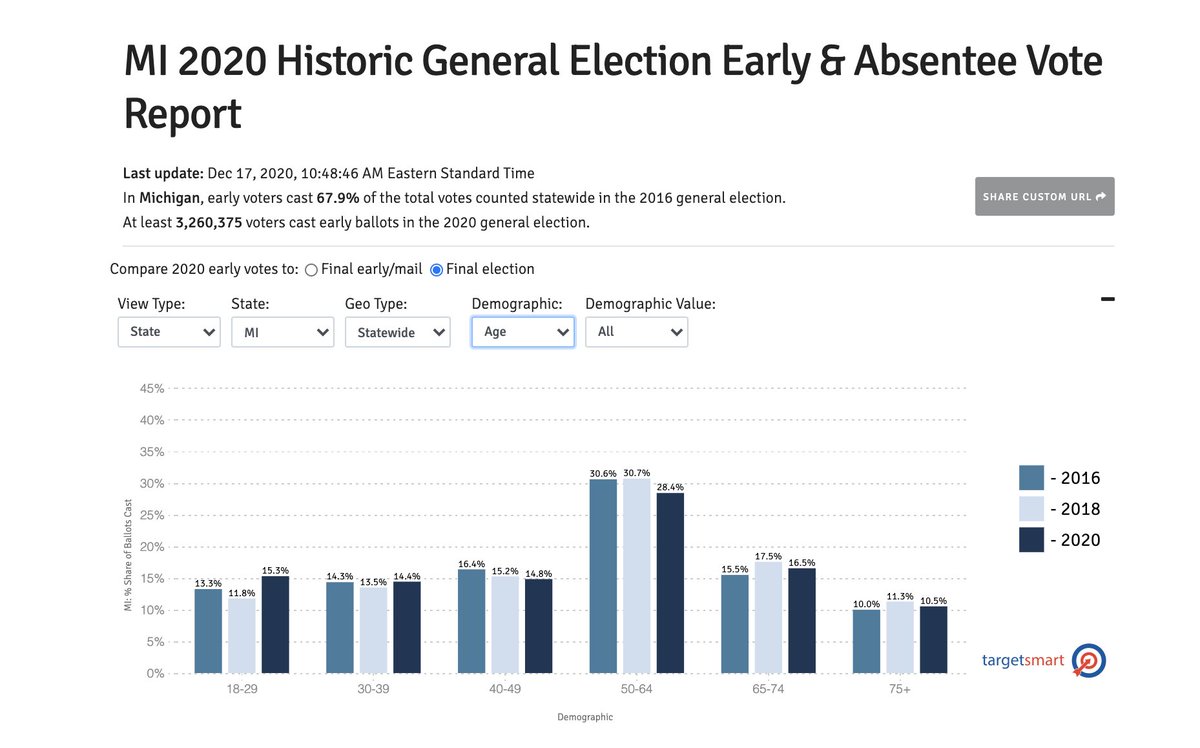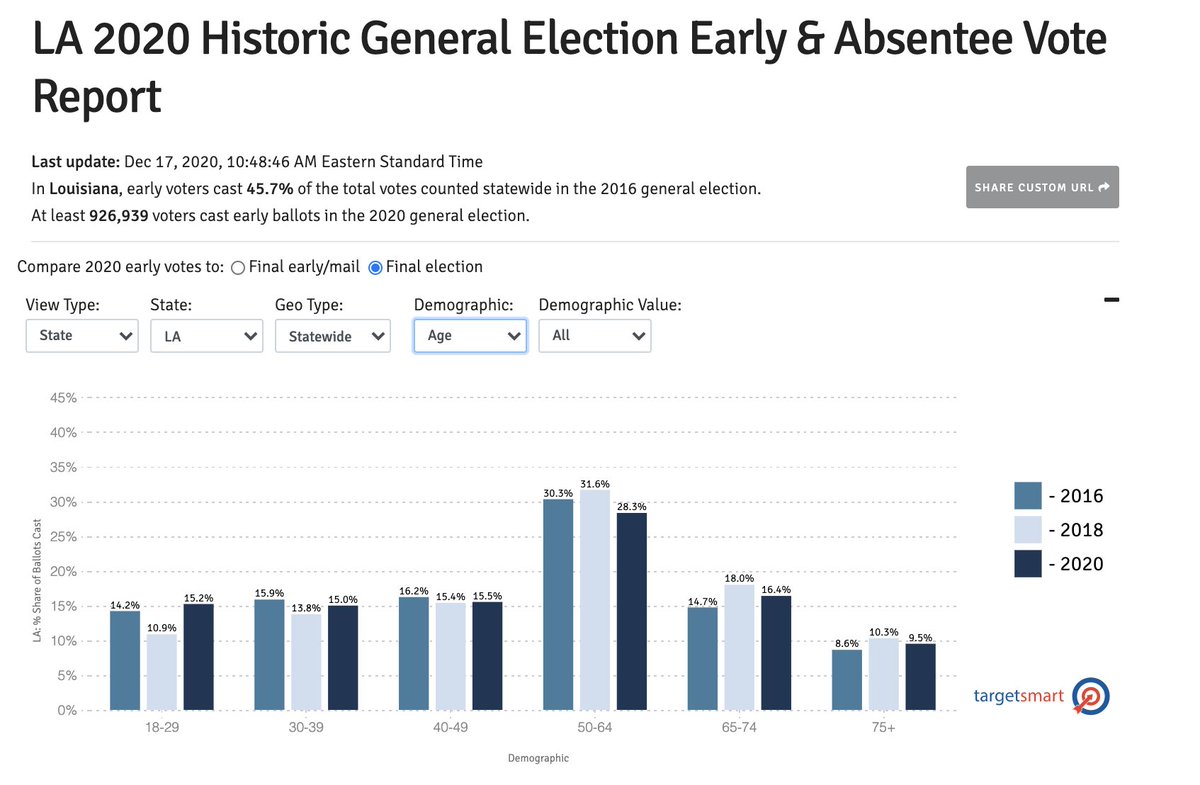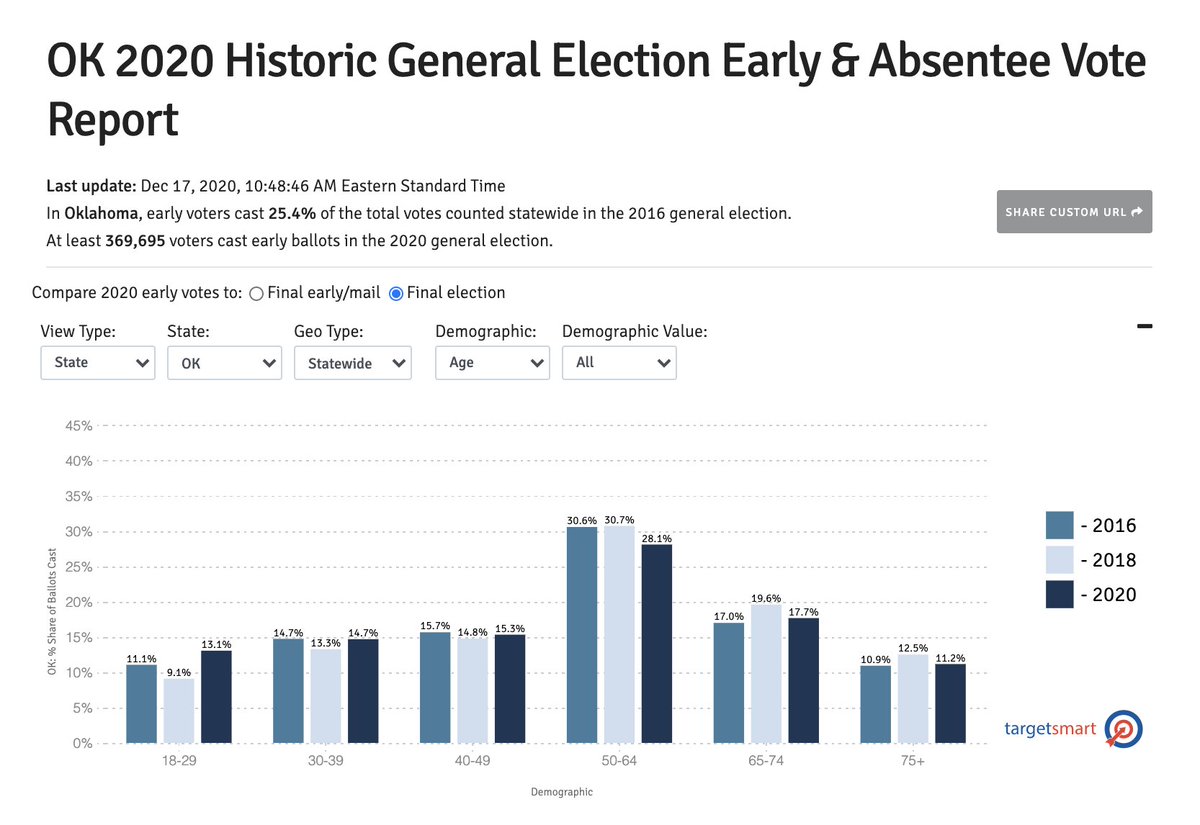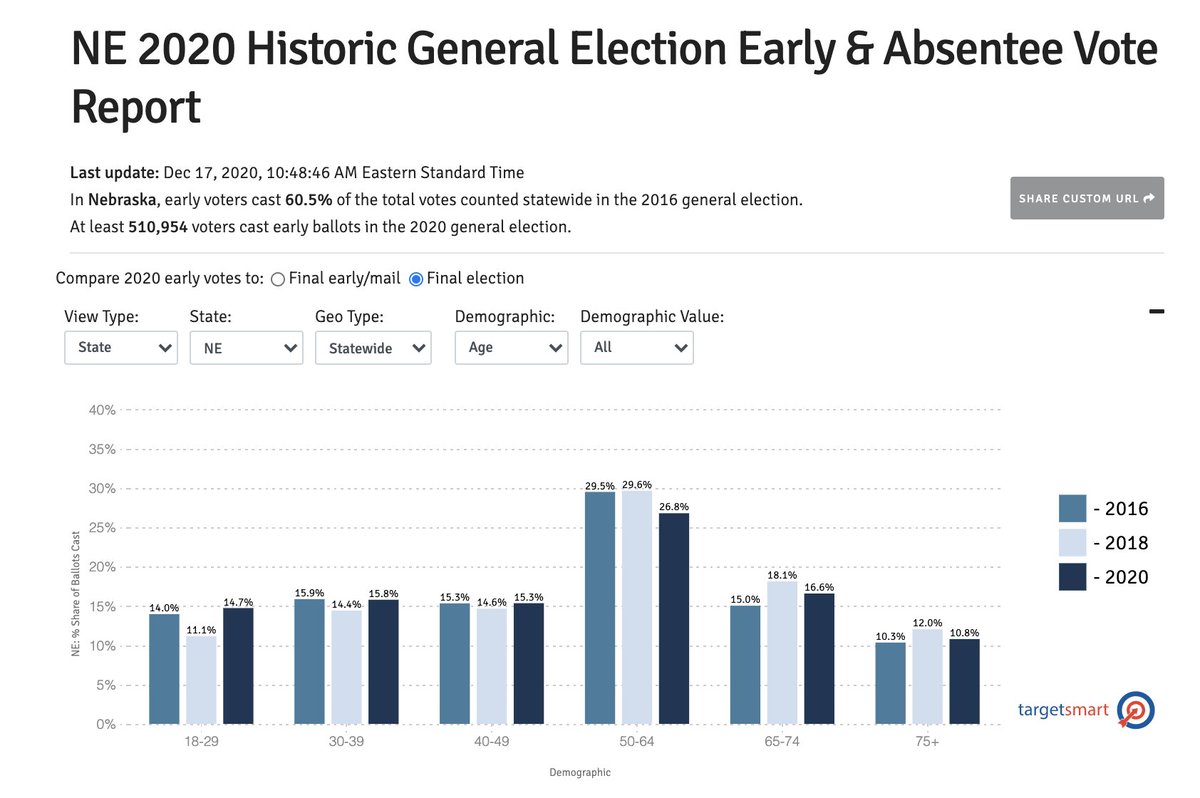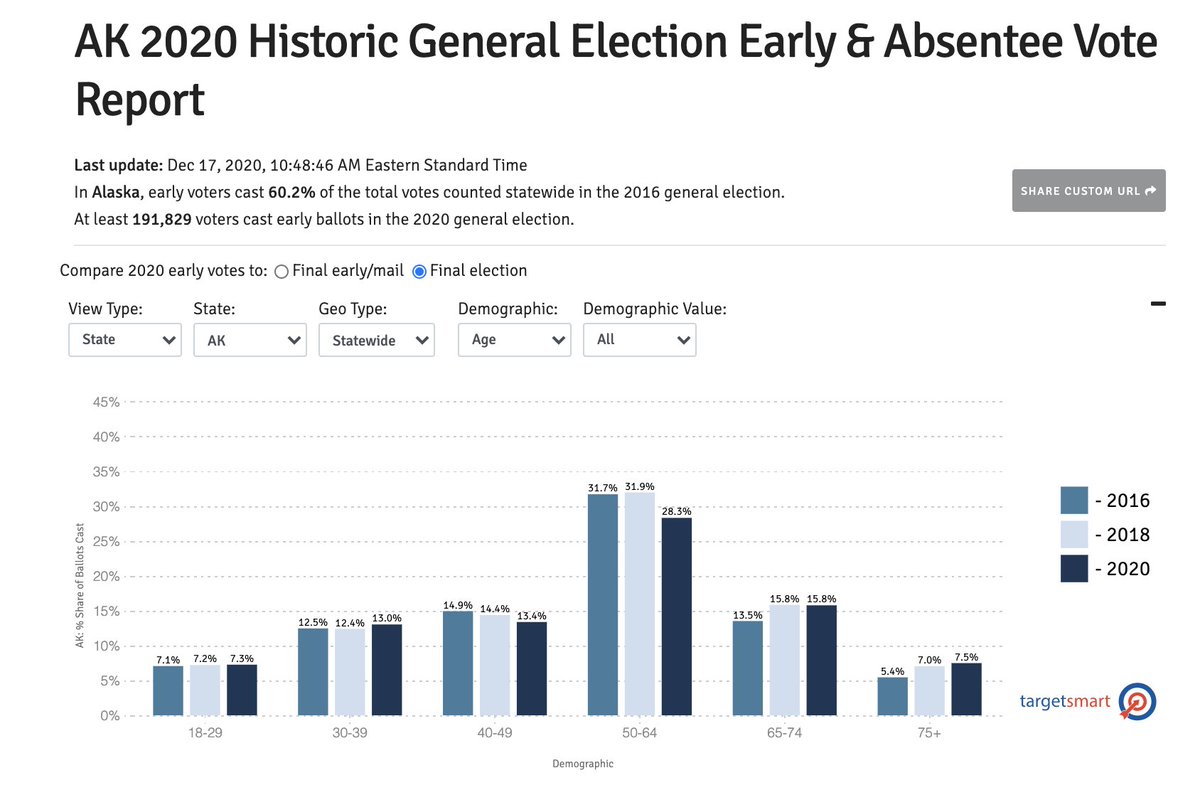
This will come across as pedantic, but I believe it's important: We need to stop talking about how groups "swung" from one election to another, as if it's the exact same people voting in each election, especially when talking about voters of color.
First, let me say I am likely as guilty of this as anyone. But as an example, many are talking about how Latino voters swung by 8 or 9% towards the GOP from '16 to '20 (citing the Shor interview here, which I mostly agree with) nymag.com/intelligencer/…
Does this mean that 8 or 9% of Latino Clinton voters supported Trump? Nope. It means that if you compare Clinton's support from Latino voters to Biden's, the difference appears to be about 8 or 9 pts. The trick is, these are two different pools of voters (with a large overlap).
The fact is, there are Latino Democrats, Republicans, and Independents. And their turnout will vary. Let's take Philadelphia as an example, as many pointed to drops in Dem support in heavily Latino wards as evidence of Latino voters flocking to Trump.
In Philly, it turns out that 11% fewer Latino Dems voted in '20 than '16, while 7% more Latino GOPs voted than did in '16. The Latino electorate went from +74.8 Dem to +69.9 Dem. Meaning that turnout, alone, accounted for a significant improvement for Trump in among Latino voters 

To add to this - there were 11,157 Dem Latinos who voted in Philly in '16 who didn't vote in '20, as opposed to only 978 Latino Republicans
Broadly, there is early evidence that Republicans actually inspired a larger overall turnout surge between '16 and '20, relative to Dems, and the same evidence suggests this turnout advantage extended to voters of color as well.
My point in offering this: we need to be clear eyed about what happened and how it transpired in order to move forward, and turnout and persuasion are two different things (sometimes driven by the same factors, often not). And we need to stop treating voters of color as monoliths
Fwiw, I think Shor's analysis is excellent, and note the language he uses (he generally doesn't refer to swings). I agree with much of it, though agree with Ruffini's point, that comparing white liberals to all VOC is a bit of a head scratcher.
I'll close with one last nudge, in what is likely a losing battle among poli-sci/psephologists - please, please stop using the term "non-white" in your analysis. Stop centering your analysis on whiteness (and "lack" thereof).
Oh, and if you want to look at changes in the partisan distribution of Latino voters, you can do so on our TargetEarly site! Just change the state from the drop-down. Here you'll see that in NV the Latino Dem share dropped 6 pts. targetearly.targetsmart.com/historic.html?…
I'm compelled to add to this thread, as it seems many are using Shor's analysis to bring back up the old argument that "defund the police" hurt Democrats. The analysis refers to this article from July about soft Biden support among Hispanics vox.com/2020/7/2/21308…
If you follow the thread, the Yglesias piece Shor cites in turn cites a story from @DomenicoNPR from late June about their latest poll. Yet Montenaro doesn't suggest Hispanic support for Biden was waning, he notes Biden continues to underperform. npr.org/2020/06/26/883…
In fact, if you look at the previous NPR survey (they don't break out Latinos) voters of color went from 24% strong approval of Trump in March to 17% strong approval in late June.
This all suggests that Latino voters (and voters of color in general) were underperforming well in advance of the summer BLM protests and the emergence of the "defund the police" slogan.
Another piece of evidence - google trends shows defund emerging and peaking in mid-June, then leveling off to a very low level. And where was it most searched? Washington, DC. Perhaps the furor over "defund" was more of a media/consultant creation? 

One more pet peeve here - even if you believe "defund" lost Dems some votes, you cannot talk about that without also acknowledging the fact that the BLM movement inspired massive surges in Dem registration when no other in-person organizing was happening.
• • •
Missing some Tweet in this thread? You can try to
force a refresh




